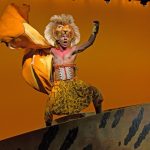Unleash Your Inner Beast With Lion 32: Ignite Your Power And Conquer!
Lion 32: The Majestic Creature of the Wild
Introduction
Good People,
2 Picture Gallery: Unleash Your Inner Beast With Lion 32: Ignite Your Power And Conquer!


Welcome to the fascinating world of lions! In this article, we will explore the mesmerizing traits of the king of the jungle – Lion 32. Lions have captivated humans for centuries with their majestic presence and unparalleled strength. Lions Enthusiast, get ready to embark on an exciting journey to discover the secrets and wonders of Lion 32.
Overview of Lion 32

Image Source: universalpropanegrill.com
Lion 32, also known as Panthera Leo, is a powerful and majestic creature that roams the savannahs of Africa. With a body length of up to 10 feet, Lion 32 is the second-largest big cat species in the world, after the Siberian tiger. Recognizable by its tawny golden fur, magnificent mane, and fierce gaze, Lion 32 is truly a sight to behold.
Lion 32 is a social animal, living in prides consisting of related females, their offspring, and a dominant male. These prides can vary in size, ranging from a few individuals to over 30 lions. Each pride has a defined territory, which they defend from other prides.
The life of Lion 32 revolves around hunting, resting, and protecting its pride. With their exceptional strength and agility, lions are formidable predators. They mainly prey on large herbivores such as zebras, wildebeests, and buffalo. Lions have a remarkable success rate in hunting, making them one of the most efficient predators in the animal kingdom.

Image Source: media-amazon.com
In addition to their hunting prowess, lions also play a crucial role in maintaining the balance of their ecosystem. Their presence helps regulate herbivore populations, preventing overgrazing and ensuring the survival of other species.
What Makes Lion 32 Unique?
🦁 Lion 32 possesses several distinctive characteristics that set it apart from other lion species:
1. Magnificent Mane: Lion 32 is renowned for its impressive mane, which varies in color and length depending on age and genetics. A full-grown male lion’s mane can reach remarkable proportions, serving as a symbol of dominance and attracting potential mates.
2. Powerful Roar: Lion 32 has a deep, resonant roar that can be heard up to 5 miles away. This vocalization serves multiple purposes, including communication within the pride and asserting territorial dominance.
3. Social Structure: Lion 32 lives in prides, forming strong bonds with its pride members. Cooperation within the pride is vital for successful hunting and protection against rival prides.
4. Strategic Hunting Techniques: Lion 32 employs a variety of hunting techniques, including ambushes and coordinated group attacks. These tactics ensure a higher chance of capturing prey and provide valuable lessons for the younger members of the pride.
5. Symbol of Power: Lion 32 has long been associated with strength, courage, and nobility. Its regal appearance and dominant presence make it a powerful symbol in various cultures and heraldry.
Who Can Encounter Lion 32?
🔍 Lion 32 can be found in various national parks and game reserves in Africa. Some popular destinations for lion sightings include:
1. Serengeti National Park, Tanzania: Known for its vast savannahs and abundant wildlife, Serengeti offers incredible opportunities to witness Lion 32 in its natural habitat.
2. Maasai Mara National Reserve, Kenya: This reserve is famous for the annual wildebeest migration, attracting predators like Lion 32 who follow the herds in search of prey.
3. Kruger National Park, South Africa: As one of the largest game reserves in Africa, Kruger is home to diverse wildlife, including Lion 32. Safari tours in Kruger offer thrilling encounters with these majestic creatures.
4. Okavango Delta, Botswana: This unique wetland ecosystem provides a rich habitat for Lion 32 and other wildlife. Exploring the Delta’s waterways and grassy plains can lead to unforgettable encounters.
5. Masai Mara National Reserve, Kenya: With its breathtaking landscapes and abundant wildlife, Masai Mara is a prime location for witnessing Lion 32 in action. The reserve offers excellent opportunities for guided safaris and wildlife photography.
When and Where to Spot Lion 32?
📅 The best time to spot Lion 32 is during the dry season, when vegetation is sparse, making it easier to see wildlife. In most regions, the dry season falls between June and October.
As for specific spots, Lion 32 can often be found near water sources, where prey congregates. Keep an eye out for them near rivers, watering holes, or areas with abundant game.
Why Are Lions Endangered?
❓ Lion 32 and other lion species face numerous threats that have led to their endangered status:
1. Habitat Loss: The conversion of natural habitats into agricultural land and human settlements has significantly reduced the available space for lions to roam freely.
2. Human-Wildlife Conflict: As human populations expand, conflicts between humans and lions arise, leading to retaliatory killings and habitat fragmentation.
3. Poaching and Trophy Hunting: Lions are targeted by illegal poachers for their bones, skins, and other body parts. Trophy hunting also poses a threat to lion populations, as it disrupts social structures and removes dominant males from prides.
4. Decline of Prey Species: The decline of lion prey species, such as zebras and wildebeests, due to habitat loss and poaching, poses a significant challenge for lion survival.
5. Disease Outbreaks: Lions are susceptible to various diseases, including canine distemper and tuberculosis, which can decimate populations and hinder their chances of recovery.
How Can We Protect Lion 32?
✅ Protecting Lion 32 and ensuring its survival requires collective efforts:
1. Conservation Initiatives: Supporting conservation organizations that work towards preserving lion habitats, implementing anti-poaching measures, and promoting sustainable tourism can make a significant impact.
2. Community Involvement: Engaging local communities and providing alternative livelihood options can reduce human-wildlife conflicts and foster positive attitudes towards lion conservation.
3. Awareness and Education: Educating the public about the importance of lions in ecosystems and encouraging responsible tourism practices can contribute to their protection.
4. Anti-Poaching Efforts: Strengthening anti-poaching measures and enforcing laws against the illegal wildlife trade are crucial in protecting lions from poachers.
5. Collaboration and Research: Collaboration between governments, conservation organizations, and local communities is vital to develop effective conservation strategies. Ongoing research on lion behavior and ecology provides valuable insights for their protection.
Pros and Cons of Lion 32
👍 Here are some advantages of Lion 32:
1. Ecological Balance: Lion 32 plays a vital role in maintaining the balance of ecosystems by regulating herbivore populations and preventing overgrazing.
2. Cultural Significance: Lions have cultural and symbolic importance in many societies, representing strength, nobility, and power.
3. Tourism Revenue: Lion 32 and other wildlife attract tourists from around the world, contributing to local economies and conservation efforts.
👎 However, there are also disadvantages to consider:
1. Human-Wildlife Conflict: As lion habitats overlap with human settlements, conflicts arise, leading to livestock losses and safety concerns for communities.
2. Livestock Predation: Lions occasionally prey on livestock, causing economic losses for farmers and perpetuating negative attitudes towards their conservation.
3. Endangered Status: Lion 32 and other lion species’ declining populations pose a threat to the overall biodiversity and ecological health of their habitats.
Frequently Asked Questions about Lion 32
1. Q: How fast can Lion 32 run?
A: Lion 32 can reach speeds of up to 50 miles per hour in short bursts.
2. Q: Are lions nocturnal or diurnal?
A: Lions are predominantly nocturnal, with most of their hunting activities taking place during the night.
3. Q: What is the average lifespan of Lion 32?
A: In the wild, Lion 32 has an average lifespan of 10 to 14 years. However, in captivity, they can live up to 20 years or more.
4. Q: Do lions have any natural predators?
A: As apex predators, adult lions have no natural predators. However, young cubs and injured or sick lions may fall victim to other predators, such as hyenas or rival lions.
5. Q: Can lions swim?
A: Lions are capable swimmers, although they tend to avoid water unless necessary.
Conclusion
🦁 Lion 32, the king of the jungle, embodies power, grace, and beauty. The challenges it faces in the modern world require our attention and action. By supporting conservation efforts, raising awareness, and promoting responsible tourism, we can ensure the survival of Lion 32 and safeguard the delicate balance of our ecosystems. Let us strive to protect this majestic creature and the wonders of the wild for generations to come.
Final Remarks
Dear Readers,
As we conclude this journey into the world of Lion 32, it is essential to remember that our actions have a significant impact on wildlife conservation. Let us cherish the beauty and diversity of our natural world and strive to protect it for future generations. Together, we can make a difference and ensure a sustainable future for Lion 32 and all its fellow inhabitants of the wild.
This post topic: Lions


